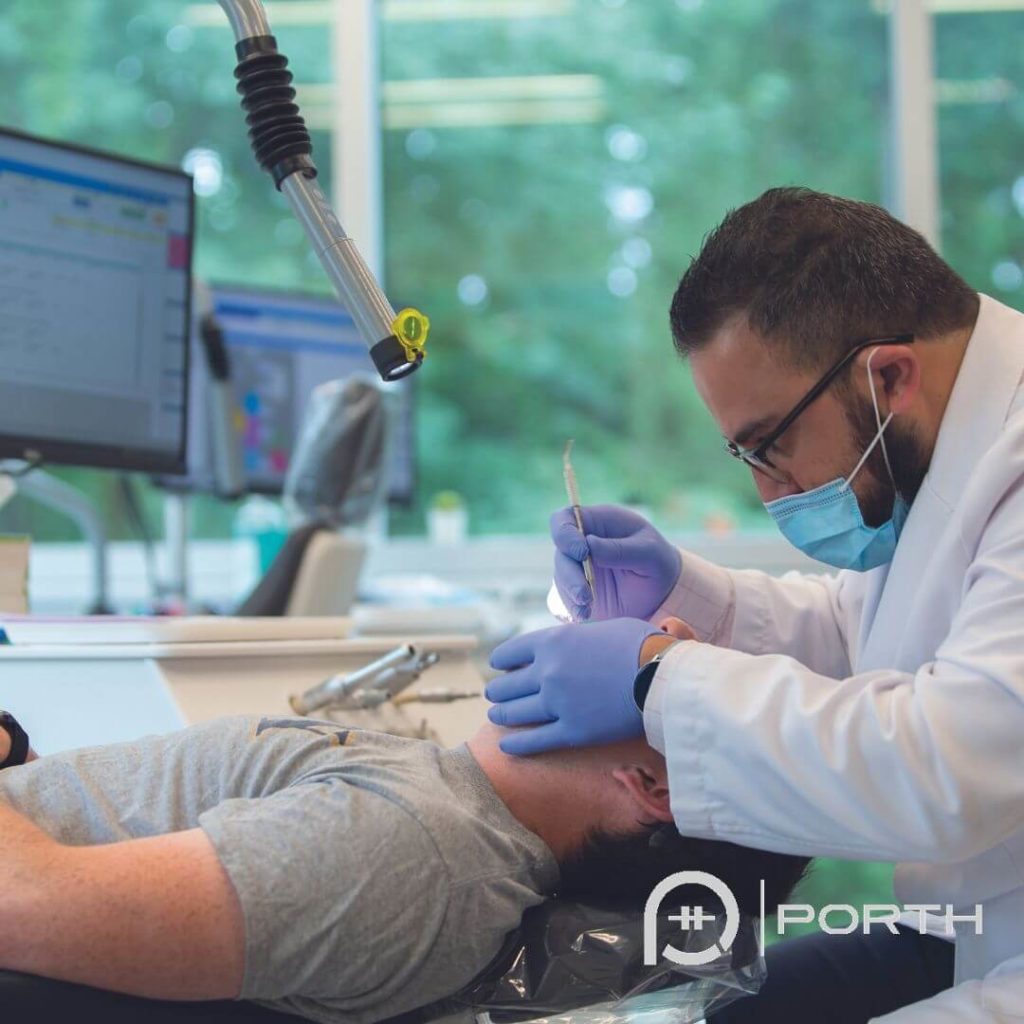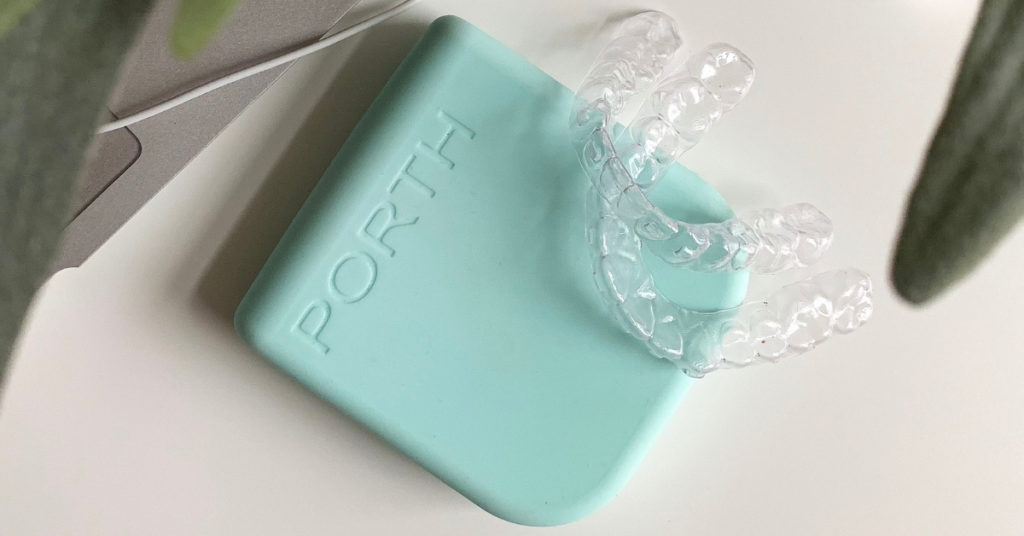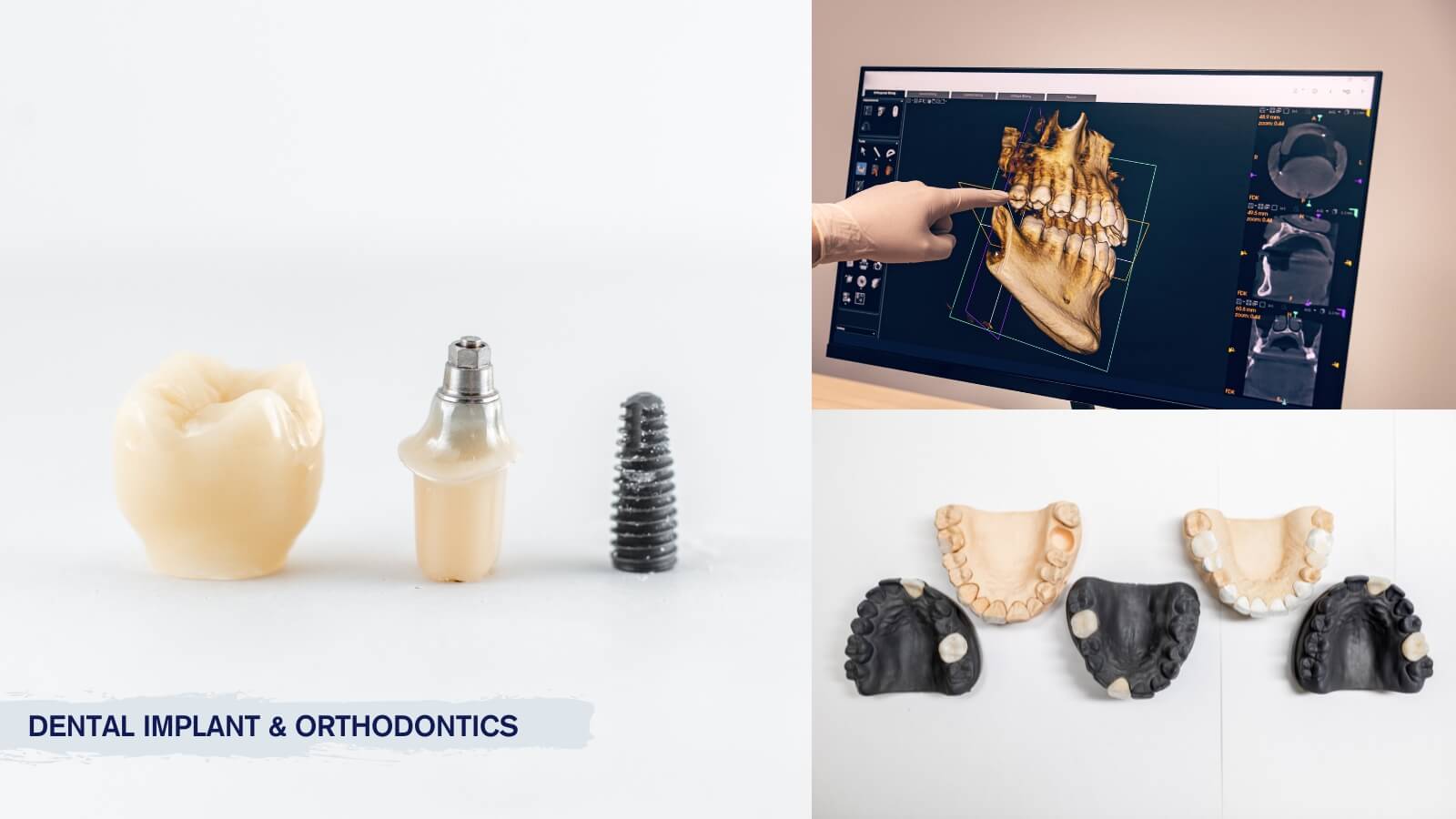Your Complete Guide to Dental Implants in Sammamish & Bellevue
Many people in the King County area want to restore their smiles with dental implants. Replacing lost teeth with artificial teeth (implant supported fixed tooth replacement or removable denture) can be combined with orthodontic treatment for a smile makeovers and bite that function well.
Are you interested in both dental implants and orthodontic treatment (Invisalign or braces)?
Which should come first: braces or the implant?
Who can place a dental implant for you? Can I get an implant with bone loss? What is the healing process?
What if you have been missing a tooth for many years? Do you need orthodontic treatment prior to oral surgery to prepare the implant site?
What is an interdisciplinary dental team and how does orthodontic treatment help with implant proper care?
The team here at PORTH is passionate about education and we want to help you get answers to your questions about implants and orthodontics.
In this guide, we’ve provided an overview of everything you want to know about dental implants in Sammamish, including how they relate to orthodontic treatment.
We work with prosthodontists (restorative specialists) , oral surgeons, and periodontists (gum specialists) to help you improve your oral health.
What Are Dental Implants?
A dental implant is a restoration designed to resemble and function just like a whole natural tooth. The restoration is supported by dental implant(s). Unlike dental crowns and bridges that rest on existing teeth, a dental implant replaces an entire tooth from root to crown. Tooth loss is a common problem in adult patients.
You will usually see dental implants depicted as small titanium screws with a false tooth (prosthesis) on the top. The screw portion is “implanted” into the bone tissue beneath the gums, and it is topped off with a connector piece called an abutment and a dental crown designed to look just like your own natural tooth.
Replacing lost teeth with dental implants helps people enjoy an improved quality of life because they can eat, talk, and smile with confidence. As the American Academy of Implant Dentistry states, “dental implants are the closest you can get to healthy, natural teeth.”
Types of Dental Implants
All dental implants work in the same basic way, being inserted below the gums with an abutment piece that sticks out above to support a restoration.
The main types of implants available in Sammamish and the surrounding area include:
- Endosteal implants
- Subperiosteal implants
- Zygomatic implants
- All-on-4 dental implants
- Implant-retained dentures
- Single-tooth implants
- Implant-supported bridges
Endosteal implants – This is the most common type of dental implant. “Endosteal” means ‘inside bone,’ and it is an implant that is inserted into the bone tissue for support.
Subperiosteal implants – “Subperiosteal” means ‘below the gums on the bone.’ Less common than endosteal implants, a subperiosteal implant is actually a thin metal frame that rests on top of the jawbone just beneath the gum tissue. This frame supports multi-tooth restorations and may be the more effective option for people who have very shallow bone tissue in their jaws.
Zygomatic implants – The “zygoma” is a medical term for your cheekbone. A zygomatic implant is one that is inserted at an angle into the cheekbone for support. People that have insufficient bone tissue in the upper half of their mouth who want dental implants may need to have zygomatic implants.
All-on-4® implants – This is a full-mouth restoration technique in which a full upper or lower arch of dental implant teeth are attached to just four implants.
Implant-retained dentures – It is difficult to make lower dentures stay in place, and a couple of small implants can help. Dentures can have implant attachment buttons placed on them that let them snap onto a couple of implants that have been surgically placed into the bone beneath the gums. Although the denture is still removable, these small implants can give it more strength and stability.
Single-tooth implants – A single-tooth implant is exactly what it sounds like: one implant topped with a crown to replace a single tooth. This is the most common type since people usually opt for an implant when they need to replace one tooth.
Implant-supported bridges – If you’re missing multiple teeth in a row, then you may be able to replace them with a dental bridge supported by implants. This may be a good alternative to replacing each individual tooth with its own implant. Unlike dentures, dental bridges are non-removable.
Same-Day implants – A same-day implant is one that is carefully planned in advance so that you can leave the office with a complete implant and crown in one day. A special temporary crown is designed in advance of your surgery and placed at the same time as the implant. After the implant has fully healed, the temporary crown will be replaced with a permanent one that you can chew on.
Dental Implants: Benefits Versus the Risks
Dental implants are medical products regulated by the FDA and are backed by a long history of treatment success. But as with any surgical procedure, there are pros and cons to weigh when you consider replacing a lost tooth with a dental implant.
Dental Implant Benefits
- Improve the appearance of your smile by filling in gaps
- Help you chew better
- Preserve the alignment of your teeth
- Prevent the further loss of height in your jawbone
- Help you enjoy a better quality of life since implants function just like natural teeth
Dental Implant Risks
- Failure due to poor healing
- Failure due to poor oral hygiene
- Surgical complications
- Damage to nearby teeth during implant placement
- Potential nerve damage from the surgery
While there are some risks associated with dental implants, careful planning for the surgery reduces the chances of complications and implant failure.
What to Expect When You Get a Dental Implant Procedure
Placing an implant is a straightforward process, but a lot of planning is needed before you can get one. This means that you can’t just visit an implant dentist in Sammamish or Bellevue and get an implant upon request. The success rate depends on various factors including amount of bone around the implant site and complete osseointegration (bone fusion) of the implant to the bone.
Instead, you will need to have a complete dental health check-up with a dentist who will assess your overall oral health and sometime tooth alignment and help you find out whether an implant is right for you.
If your dentist recommends an implant, then he or she will let you know whether you can get it done at their practice or visit an specialist to have the implant surgery. Periodontist who is a dentist specialized in periodontal disease (periodontology), oral surgeon or a dental implantologist often offer an implant for a new tooth.
Once the bone tissue has healed around the implant, your dentist will design and place a custom restoration like a crown to complete it.
The Basic Process of Getting a Dental Implant
- Visit a dentist for a check-up, teeth cleaning, and treatment plan.
- Treat urgent oral health problems like cavities and gum disease (periodontal disease).
- Make sure your overall health is in good condition for dental implant surgery to promote rapid healing.
- Plan the dental implant surgery with X-rays and even a surgical planning program and then schedule your procedure. As part of surgical planning you need to know if there is enough space in the implant site.
- A brief surgical procedure during which the dentist:
- numbs the treatment site
- opens the gum tissue
- creates a small hole in the underlying bone
- inserts the implant
- closes the gums over the implant
- A period of healing allows the implant to become one with the bone.
- Return to the dentist after about 4–6 months to have the gum tissue opened up, and an abutment placed on the implant.
- Get a custom-designed restoration placed onto the implant abutment.
- A follow up appointment will check the health of the tissue around the implant including the sinus for the upper implants.
Does It Hurt to Get a Dental Implant?
Having an implant placed into the bone of your mouth might sound scary, but you won’t actually feel a thing. The dentist will place some local anesthetic in the area so that you will stay comfortable throughout the procedure. Local anesthesia and sometime combined with nitros gas is the best solution to receive a dental implant. It’s normal to experience a little swelling and discomfort for the next couple of days after the anesthetic has worn off, but this is quite easy to manage.
Do Orthodontists Place Dental Implants?
As experts in tooth movement and jaw alignment, orthodontists do not usually place dental implants. There is no such thing as an official “implant dentist” or “dental implant specialist,” but general dentists, periodontists, and oral surgeons are qualified professionals who often perform dental implant surgeries.
An orthodontist can play an essential role in preparing for dental implant placement, however. Your Sammamish orthodontist can assess your tooth alignment and let you know if you need treatment to prepare the space for your implant.

Life with a Dental Implant
What is it like to have a dental implant?
A dental implant is not a real tooth, so it doesn’t experience sensation like a natural tooth. Other than that, a dental implant feels very much like a natural tooth when you chew and talk. Implants are securely rooted in bone tissue, so they are very strong and you won’t have to worry about your implant moving around or falling out when you talk.
Your implant will look so much like a natural tooth that no one else would ever guess it isn’t a real tooth unless you tell them!
Most dental implants stay strong for 20 years or more, and it’s becoming more common to hear about people who have implants that are 30 years old. While crowns and bridges usually need to be replaced within 15 years, implants have the potential to last a lifetime.
How to Care for Your Dental Implant
- Brush your implant along the gumline, just as you do your other teeth
- Gently floss around your implant every day when you floss your other teeth
- Use an antibacterial mouthwash to prevent plaque from growing around your implant and teeth
- Get regular dental checkups where your dentist can check the stability of your implant and the health of the bone tissue around it
Is a Dental Implant Right for You?
Dental implants are perfect for almost anyone who wants a stable, natural-looking, and permanent solution for replacing lost teeth. If you are missing one or more teeth, then dental implants are definitely worth looking into.
Dental implant placement involves only minor surgery, so most people can have the procedure with no problems.
There are, however, a few conditions that could prevent someone from getting implants.
These include:
- Having uncontrolled diabetes
- Having active gum disease
- Smoking
- Being too young (dental implants can only be placed when the jaw and facial bones have fully matured)
- Poor tooth alignment that doesn’t leave enough space for an implant
The Cost of Dental Implants in Sammamish and Bellevue, Washington
The cost of dental implant treatment varies from dentist to dentist and depends on each individual patient’s needs. The average cost of a single dental implant in Sammamish and other parts of the United States is about $5,000. Some dentists may offer dental implants at a much lower rate because they want to attract more patients and gain even more experience in placing implants, so you may see special offers of $2,000 per implant or even less.
The cost of dental implant treatment is also determined by the other kinds of treatment you may need. For example, you might need orthodontic treatment beforehand to create enough space in your mouth for the implant. Or you may need to have bone grafting done to strengthen the area where the implant will go.
When you book a consultation with a dentist, he or she will give you an estimate of the total cost of your dental implant treatment.
With most dental implants starting at five grand, it’s clear that you’re looking at a major investment.
For interdisciplinary treatment, each service has different cost. You can read more about the cost of orthodontic treatment.
How can you afford dental implants?
Dental insurance is one option. In the past, most dental coverage providers did not cover dental implants because they were considered a non-essential treatment. While more dental insurance companies do offer benefits for implants these days, that coverage may be limited or even conditional.
Example 1: A dental insurance provider might cover the cost if you need to replace a tooth that was lost in a recent accident, but not if you lost most of your many years ago due to decay.
Example 2: A dental insurance company might cover part of your treatment, but not all expenses associated with it. You may have to pay out of pocket if you need dental sedation or additional X-rays.
A financing plan is another great option for people with and without dental insurance. Most dental and orthodontic practices offer in-house financing personalized to your unique treatment needs and budget. This is definitely a low-stress way to manage the cost of dental implants, so ask your dentist about payment plans when you discuss getting implants.
Orthodontics and Dental Implants Near Sammamish

Now let’s talk about the connection between braces and dental implants.
In years past, relatively few people could pay for dental implants and braces were mostly for teenagers. But nowadays, adults of all ages want to achieve the smile of their dreams. A combination of both orthodontic treatment and dental implants is often the way people can create a youthful and healthy smile.
So if you’re interested in straightening your teeth and replacing a lost tooth with an implant, which should you do first?
Here’s the short answer: plan to get braces first.
The reason for this is that natural teeth can move, but dental implants cannot. Tooth roots are surrounded by a cushion of tissues lined with special cells that make bone either break down or regrow in response to tooth movement. Dental implants are made of non-living materials like titanium that can’t communicate with bone tissue as tooth roots can. Once an implant is embedded in your bone, it stays in that spot for good.
Additionally, even moving one tooth can change the way your teeth fit together in your mouth. Because an implant can’t be moved to fit in with the rest of your bite, you could experience tooth or jaw pain because of where your other teeth come into contact with that implant.
It’s ideal to bring the rest of your teeth into healthy alignment with orthodontic treatment before replacing missing teeth with implants.
Let’s discuss some common scenarios:
Scenario 1: You currently have braces but would like to get a dental implant in the future.
Most likely, your orthodontist took your missing teeth into account when creating your treatment plan. If you are worried about gaps in your smile, ask your orthodontist what you can expect when your treatment is finished.
Scenario 2: You’ve had orthodontic treatment in the past, but your teeth have shifted out of alignment.
In this case too, it’s best to visit an orthodontist to find out if retreatment is needed in order for you to get a dental implant.
Scenario 3: You lost a tooth a long time ago and other teeth have tilted forward into the empty space.
You may likely need orthodontic treatment to straighten out your teeth and clear the space so that a dental implant can be placed later on.
Scenario 4: You have just recently had a tooth pulled or knocked out and you’re self-conscious about the gap in your smile, but you also want straighter teeth.
It can be embarrassing to have a big gap in your smile and you probably want to fill it in right away. If you get a dental implant now, however, that might make it difficult to straighten your teeth in the future. Instead of placing an implant immediately, your dentist might recommend a removable temporary partial denture that you can wear when you’re around other people. This would give you time to move your teeth before getting the implant.
Do you know what the very best part about getting braces before a dental implant is?
Depending on the tooth you’re missing, you may end up not even needing an implant at all!
Yes, it may be possible to move your remaining teeth into an alignment that fills in any gaps. Your Sammamish or Bellevue orthodontist will collaborate with your dentist to create the best treatment plan for your unique needs.
Keep in mind that each case is different and there are some unique instances in which people who already have dental implants get orthodontic treatment.
The important thing is to start with a professional consultation to find out what your options are.
Adult Interdisciplinary Orthodontist in Sammamish and Bellevue
If you’re interested in both orthodontic treatment and dental implants in the Seattle area, get started by booking a consultation at an orthodontic practice. And for the most personalized treatment planning experience, make your appointment at PORTH with Dr. Rooz Khosravi.
Here at PORTH, our focus is on tailoring the treatment journey to each individual patient’s needs. From jaw surgery to ensure a healthy bite, to esthetic braces and clear aligners for adults, we offer a complete range of orthodontic solutions.
PORTH has two convenient locations: one in Bellevue, WA and the other in Sammamish, WA.
We also offer virtual consultations. Contact us today to book a free initial visit!
